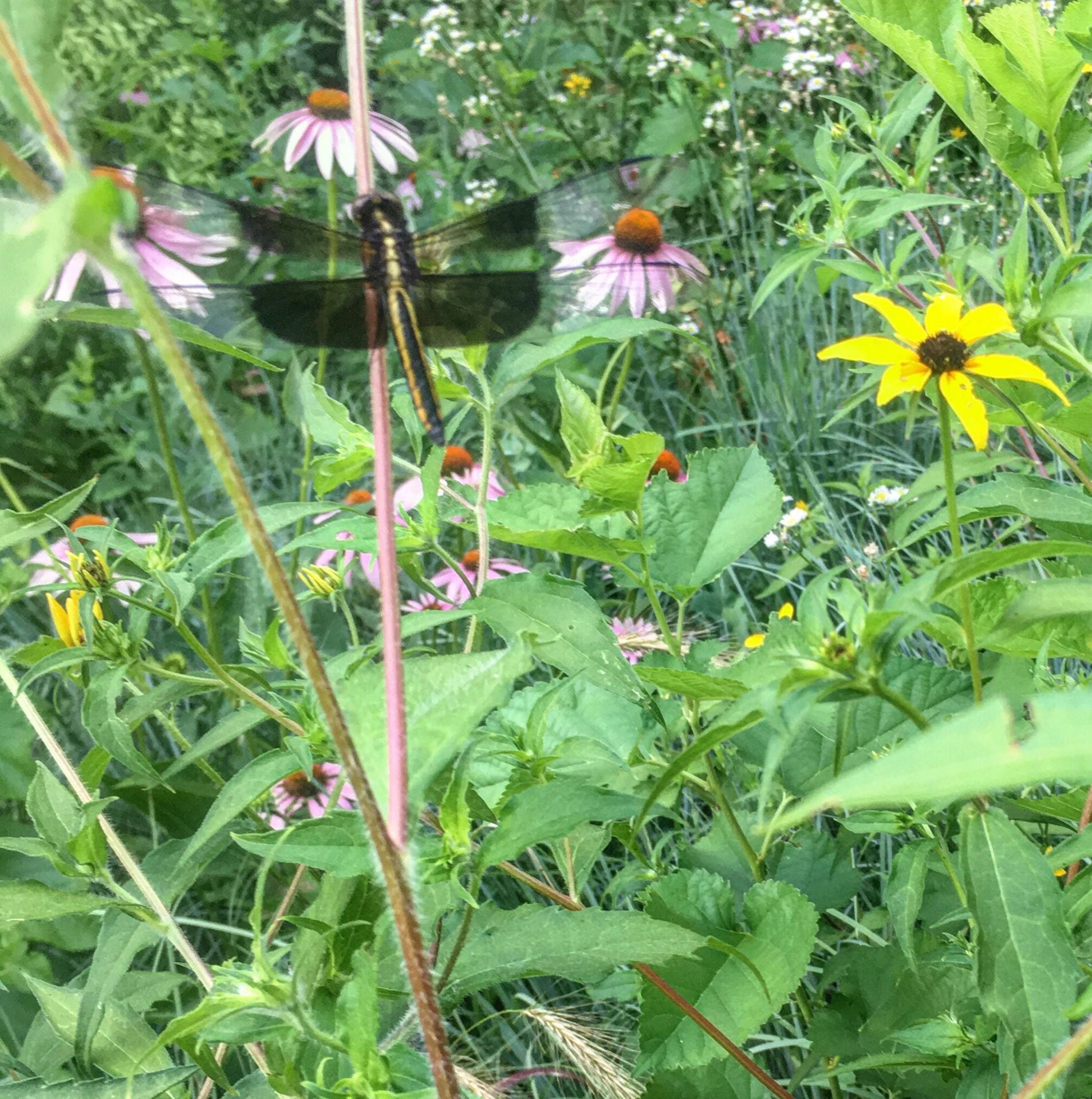post written by Kiona Freeman, K-State student in Arts & Sciences and former Meadow intern
For many reasons, the Meadow is of value to the K-State campus and the Manhattan community. Planted by seed in 2013, the Meadow has become a space within campus that has benefits for students and faculty, and offers a place to experience native species of the Flint Hills Ecoregion. Through various research and observation projects the value of the Meadow can be seen and evaluated based on its qualities for learning, restoring, and experience.

Learning
Research and observation conducted during the growing season of 2016 has shown that the Meadow is home to multiple orders of native insects, including: “…Hymenoptera (Bees), Hymenoptera (Ants), Hymenoptera (Wasps), Lepidoptera (Butterfly/ Moths), Arachnid (Spiders), Coleopera (Beetles), Odonata (Dragonflies), Orthoptera (Grasshoppers), Diptera (Flies), and other unidentified orders” (Canfield, et al. 2018, 20-21). The discoveries were made through observation counts and pan trapping. This study exemplifies the benefit the Meadow provides to the network of ecosystem services on campus and symbolizes the potential opportunities for further research. The Meadow serves as an on campus opportunity for course identification exercises and learning of methods for investigating ecosystem services. The Meadow has become home to many species, thus becoming home to many opportunities.

Restoring Ecosystem Health
The Meadow is intended to be a site scale functioning ecological design that offers various ecosystem functions. To test the Meadow for such ecosystem functions and health, students evaluated and scored the Meadow based on the Rapid Ecological Assessment Rubric, written by Dr. Trisha Moore. The factors considered were Plant Health, Soil Erosion, Soil Health and Structure, and Faunal Health. The scale was divided into four categories: 1-Poor, 2-Fair, 3-Good, 4-Excellent (Canfield, et al. 2018, Appendix 4). The Meadow received an overall score of 3.56 in the combined four categories. Scoring excellent in the categories of Plant Health and Soil Erosion, Meadow is thriving in the categories of plant density, diversity, and overall health with the soil remaining in good position and intact (Canfield, et al. 2018, 14). Scores for Soil Health and Faunal Health were good, demonstrating that the there was a presence of desirable species ranging from birds to arachnids. Although these assessments were made by students in a short amount of time, it does indicate that the Meadow is a healthy landscape, serving the ecosystem functions the are benefitting campus, and playing a role in the overall health and wellness of the Manhattan community.
Experiencing
The Meadow is a landscape that is serving many functions. It is a landscape that has the potential to enrich various groups of people, and it is a landscape that is home to many native animals and insects. The Meadow is an area on campus for reflection, appreciation, and experiencing the power of a native grass landscape at site scale. Through the use of signage, visitors can come to understand the Meadow’s purpose while immersing themselves in an experience unlike any other on campus. The Meadow has the potential to bring nature to a community of individuals who may not have the resources or time to go seek out nature. While walking through the Meadow, sounds of the insects, bird, and small mammals speak to you, colors of the native vegetation draw in your eyes and attention, and the immersive experience allows for individuals to reach out and interact with the vegetation, even create art.

References
Canfield, Jessica, Lee R. Skabelund, Katie Kingery-Page, and Stacy Hutchinson. 2018. Green Infrastructure Demonstration and Training: Monitoring and Interpreting Two Sites on the K-State Campus. Final Technical Report, Manhattan: U.S. Enviornmental Protection Agency.: p 14, 20-21, Appendix 4